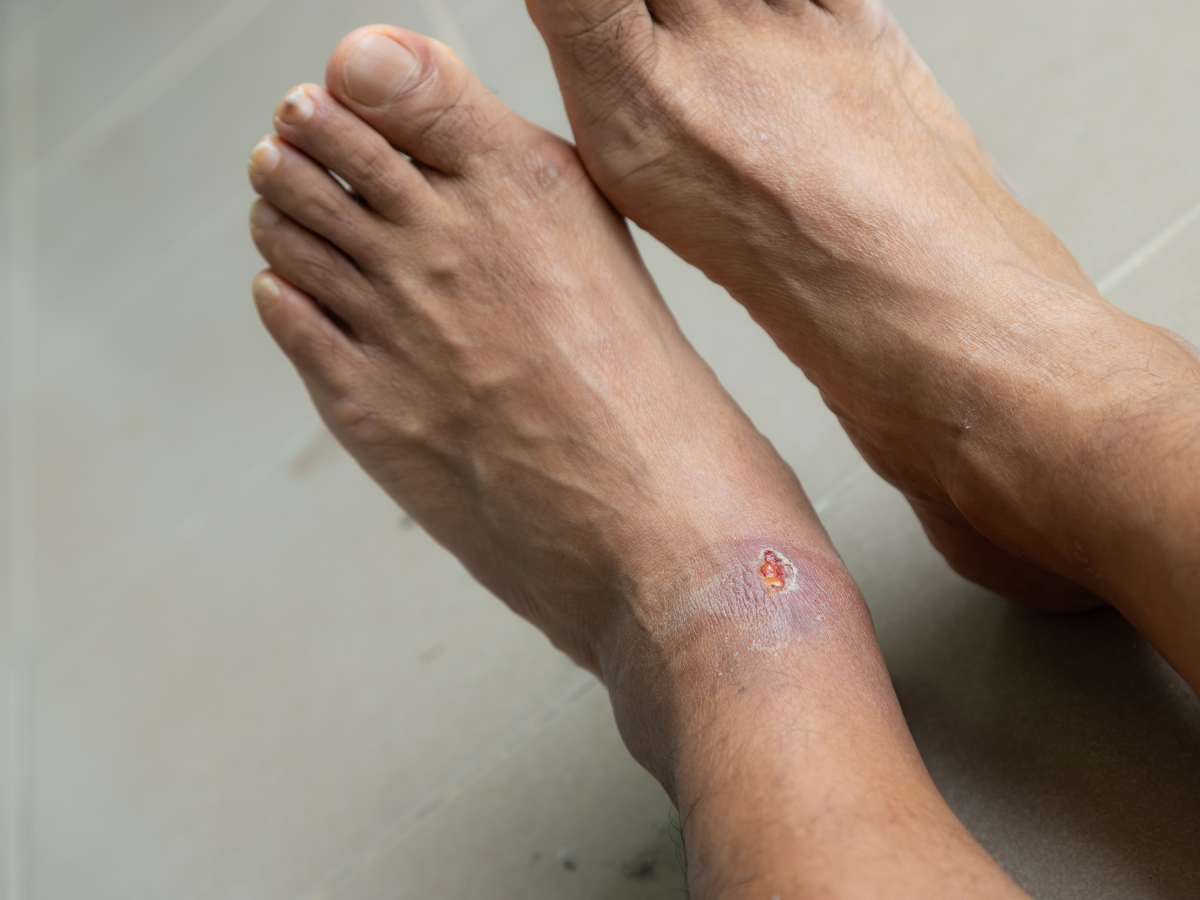Venous Ulcers and Arterial: What Is the Difference?

Venous and arterial ulcers are two types of leg ulcers that can occur when the blood flow to the legs is impaired. Venous ulcers are more common, while arterial ulcers are more serious.
Difference between venous and arterial ulcers
The main difference between venous and arterial ulcers is the cause. Venous ulcers are caused by vein damage, while arterial ulcers are caused by artery damage. Both ulcers can be painful and lead to severe complications if left untreated.
Venous Ulcers
Venous ulcers are the most common type of leg ulcer, accounting for about 80% of all cases. They usually occur on the inner side of the leg, just above the ankle. Venous ulcers are caused by vein damage, which can be due to many factors, including:
- Chronic venous insufficiency: This is a condition in which the valves in the veins that carry blood back to the heart are damaged. This causes blood to pool in the legs, leading to swelling and ulcers.
- Varicose veins: These are enlarged, twisted veins that can occur anywhere in the body but are most common in the legs. They can cause venous ulcers by damaging the valves in the veins or by causing inflammation and scarring of the vein walls.
- Deep vein thrombosis: This is a blood clot that forms in the deep veins of the legs. It can cause damage to the vein walls, leading to ulcers.
Arterial Ulcers
Arterial ulcers are less common than venous ulcers, accounting for about 20% of all leg ulcer cases. They usually occur on the outer side of the leg, just below the knee. Arterial ulcers are caused by artery damage, which can be due to some factors, including:
- Atherosclerosis is a condition in which the arteries become clogged and narrowed due to plaque buildup. This can reduce blood flow to the legs and lead to ulcers.
- Peripheral artery disease is a condition in which the arteries that supply blood to the legs become narrowed or blocked. This can also lead to ulcers.
- Diabetes: This is a condition in which the body does not properly process sugar, leading to high blood sugar levels. Diabetes can damage the arteries and nerves, leading to ulcers.
Both venous and arterial ulcers can be painful and lead to severe complications if left untreated. Ulcers can become infected, leading to cellulitis, a potentially life-threatening infection of the skin and underlying tissue. Ulcers can also lead to gangrene, a condition in which the tissue dies due to a lack of blood flow. Gangrene can require amputation of the affected limb.
Treatment of venous and arterial ulcers
Venous and arterial ulcers can be treated with various methods, depending on the severity of the ulcer. Treatment options include:
- Compression therapy involves wearing special stockings or bandages that apply pressure to the leg and help reduce swelling.
- Leg elevation: This helps reduce swelling by keeping the leg above the level of the heart.
- Wound care involves cleaning the wound and applying a bandage or dressing.
- Antibiotics: These are used to treat infected ulcers.
- Surgery: In some cases, surgery may be necessary to repair the underlying condition causing the ulcer.
Thank you for reading!
References
- Arterial vs. Venous Ulcers: Diagnosis and Treatment. (2001). Advances in Skin & Wound Care, 14(3), 146–147. https://doi.org/10.1097/00129334-200105000-00012
- Grey, J. E., Harding, K. G., & Enoch, S. (2006). Venous and arterial leg ulcers. BMJ, 332(7537), 347–350. https://doi.org/10.1136/bmj.332.7537.347